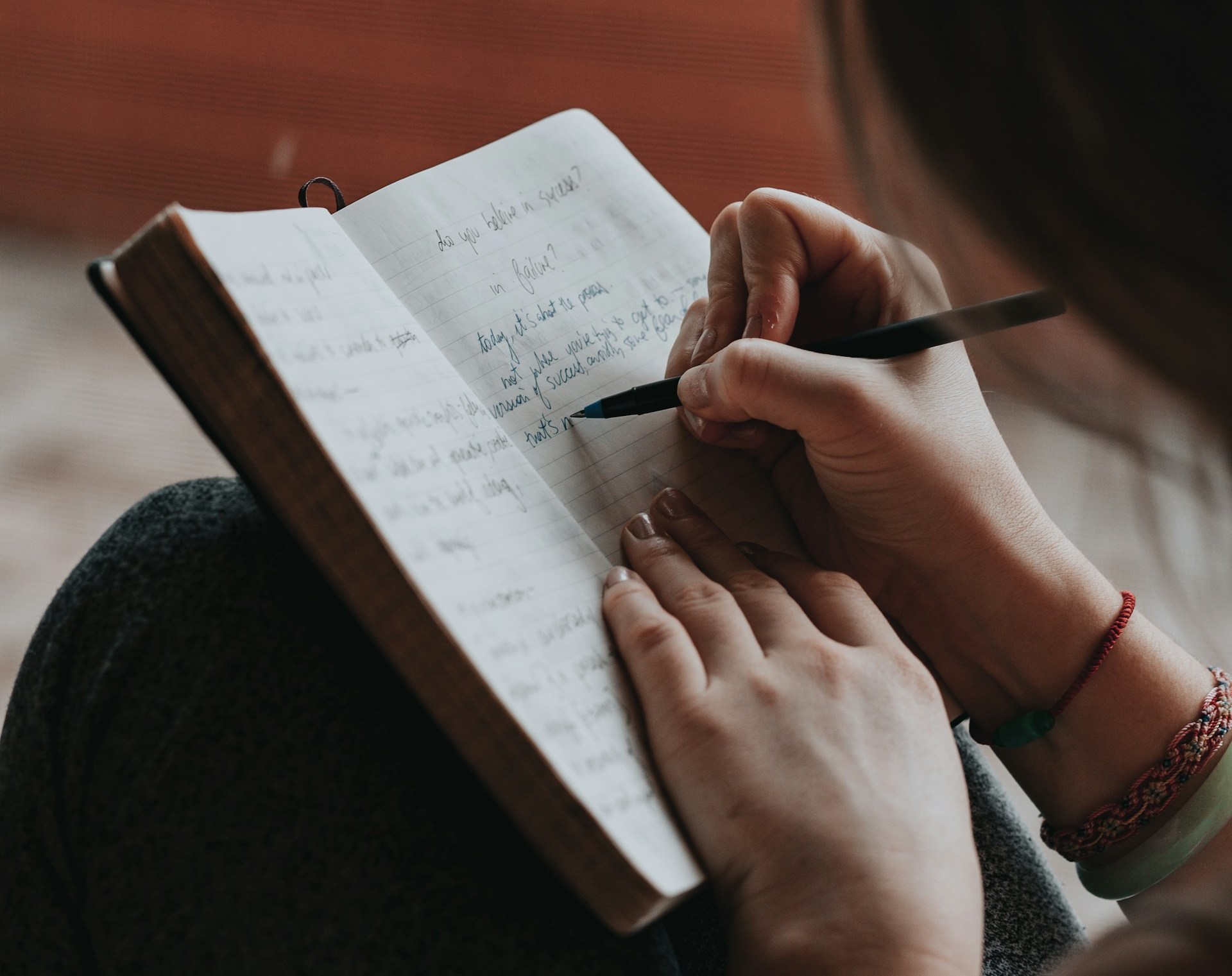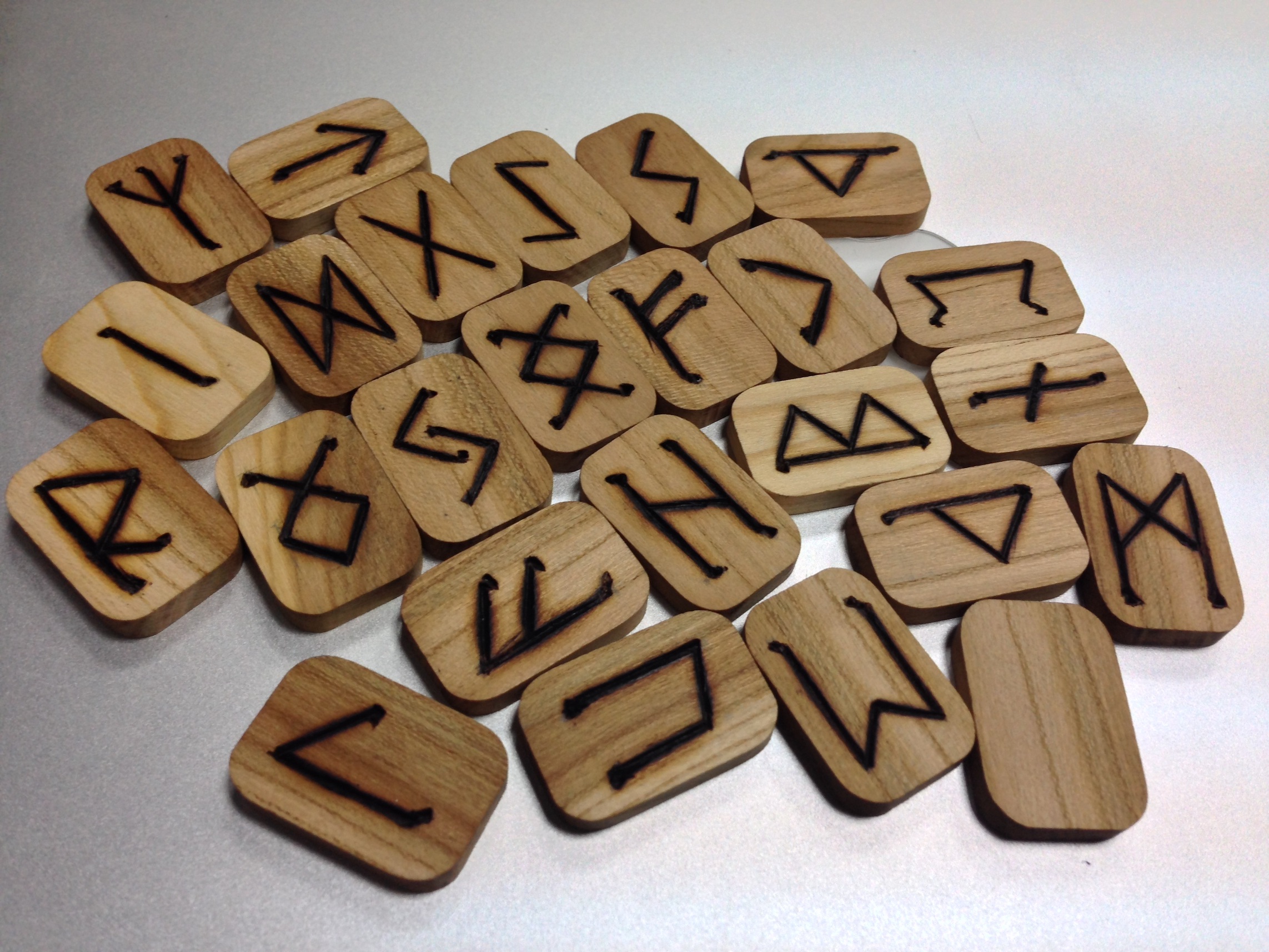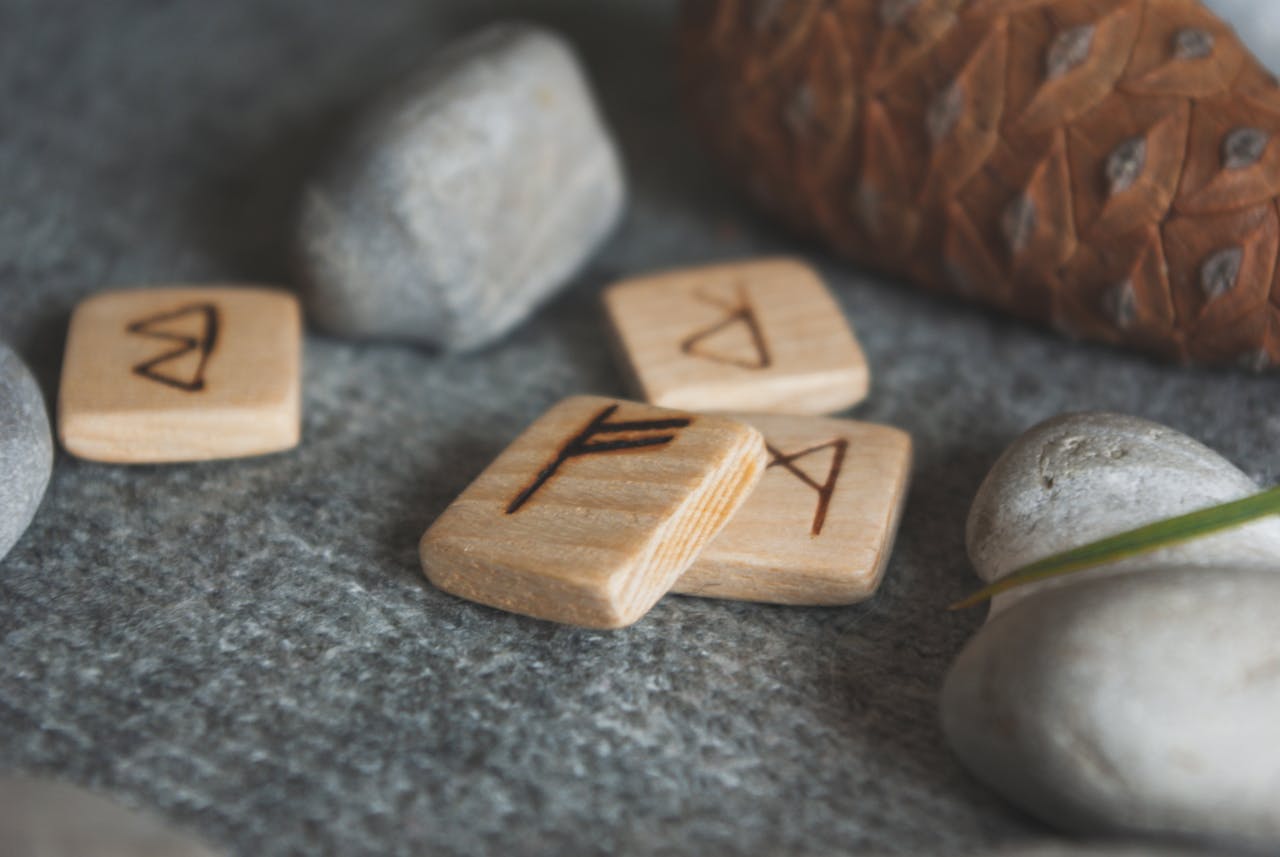
runes


Elder Futhark Rune Meanings and Uses
The Elder Futhark runes are an ancient Germanic script used from the 2nd to the 8th centuries, primarily by tribes in what is now Scandinavia and other parts of northern Europe. Each rune not only represented a sound but also held specific meanings and symbolic significance. In magick, runes are used as tools for divination, spellwork, and invoking spiritual protection, among other uses. The powerful symbolic meanings associated with each rune make them versatile and potent elements in various magickal practices. Elder Futhark Rune Meanings Here are explanations for each of the 24 runes of the Elder Futhark and their uses: FEHU (ᚠ) represents Livestock. It symbolizes Wealth, Abundance, Success, Security, Fertility. URUZ (ᚢ) represents the Wild Ox. It symbolizes Strength, Health, Wild Potential, Freedom. THURISAZ (ᚦ) represents a Thorn or Giant. It symbolizes Defense, Reactive Force, Conflict, Protection. ANSUZ (ᚨ) represents a God, associated with Odin. It symbolizes Wisdom, Communication, Revelation, Authority. RAIDHO (ᚱ) represents a Ride or Journey. It symbolizes Travel, Movement, Rhythm, Order. KENAZ (ᚲ) represents a Torch. It symbolizes Vision, Revelation, Knowledge, Creativity. GEBO (ᚷ) represents a Gift. It symbolizes Generosity, Exchange, Balance, Hospitality. WUNJO (ᚹ) represents Joy. It symbolizes Pleasure, Comfort, Harmony, Fellowship. HAGALAZ (ᚺ) represents Hail. It symbolizes Disruption, Change, Destruction, Challenge. NAUTHIZ (ᚾ) represents Need. It symbolizes Necessity, Hardship, Survival, Endurance. ISA (ᛁ) represents Ice. It symbolizes Stasis, Clarity, Challenge, Delay. JERA (ᛃ) represents Harvest. It symbolizes Cycles, Peace, Prosperity, Fruitfulness. EIHWAZ (ᛇ) represents the Yew Tree. It symbolizes Endurance, Transformation, Death, Regeneration. PERTHRO (ᛈ) represents Fate or a Cup. It symbolizes Mystery, Destiny, Chance, Gambling. ALGIZ (ᛉ) represents Protection. It symbolizes Defense, Shielding, Support, Warding. SOWILO (ᛊ) represents the Sun. It symbolizes Success, Honor, Health, Vitality. TIWAZ (ᛏ) named after the god Tyr, represents Justice. It symbolizes Law, Order, Sacrifice, Warrior’s Path. BERKANO (ᛒ) represents the Birch Goddess. It symbolizes Birth, Regeneration, New Beginnings, Fertility. EHWAZ (ᛖ) represents the Horse. It symbolizes Trust, Partnership, Loyalty, Friendship. MANNAZ (ᛗ) represents Mankind. It symbolizes Humanity, Support, Social Order, Culture. LAGUZ (ᛚ) represents Water. It symbolizes Flow, Intuition, Dreams, Emotions. INGWAZ (ᛜ) named after the god Ing, represents Fertility. It symbolizes Growth, Common Welfare, Completion. DAGAZ (ᛞ) represents Day or Dawn. It symbolizes Awakening, Clarity, Breakthrough, Transformation. OTHALA (ᛟ) represents Ancestral Property. It symbolizes Heritage, Inheritance, Home, Permanence. Elder Futhark Uses in Magick Each rune’s unique energies and attributes allow them to be used in a multitude of ways within magickal practices, and their use can be adapted to fit the needs and intuitions of individual practitioners. Here’s how runes are typically used in magick: 1. Divination Runes are commonly used in divination systems, similar to tarot or oracle cards. This practice is known as “rune casting.” Practitioners might draw runes from a bag at random and interpret them based on their positions and the runes themselves, using their traditional meanings to gain insight into personal questions, future events, or spiritual guidance. 2. Spellwork Runes can be used in spellwork by inscribing them on candles, papers, amulets, or other objects. Each rune’s symbolic properties can be utilized to enhance the spell’s intention. For example, Fehu could be used in a prosperity spell, while Berkano might be incorporated into a ritual for fertility or new beginnings. 3. Runic Scripts Runes can be combined to create bindrunes—combinations of several runes merged into a single symbol. These bindrunes combine the powers and aspects of each rune to achieve a specific magickal goal. They can be designed for protection, to attract love, to ensure victory, or any other purpose by selecting appropriate runes and merging their shapes. 4. Meditation and Focus Runes can also serve as focal points for meditation. The practitioner might focus on a specific rune to draw its energy during meditation, seeking to internalize the rune’s qualities, such as strength, wisdom, or peace. 5. Protection Runes are used for protection by inscribing them on objects, doorways, or even people. Algiz, for example, is a rune often associated with protection and may be used to guard a person from negative energies or influences. 6. Amulets and Talismans Runes are engraved on or incorporated into amulets and talismans to carry their power with the bearer. These objects serve as protective wards or as tools to enhance specific qualities in the wearer, such as courage (Tiwaz) or mental clarity (Ansuz). 7. Healing and Restoration Some runes have healing connotations and can be used in rituals intended to facilitate healing and physical recovery. For example, Laguz, associated with water, might be used in healing practices related to emotional or physical cleansing.

The Ancient Art of Runes: Discovering Your Inner Self
Discover the ancient wisdom of runes and how these powerful symbols can guide you on a path of self-discovery and personal insight.
